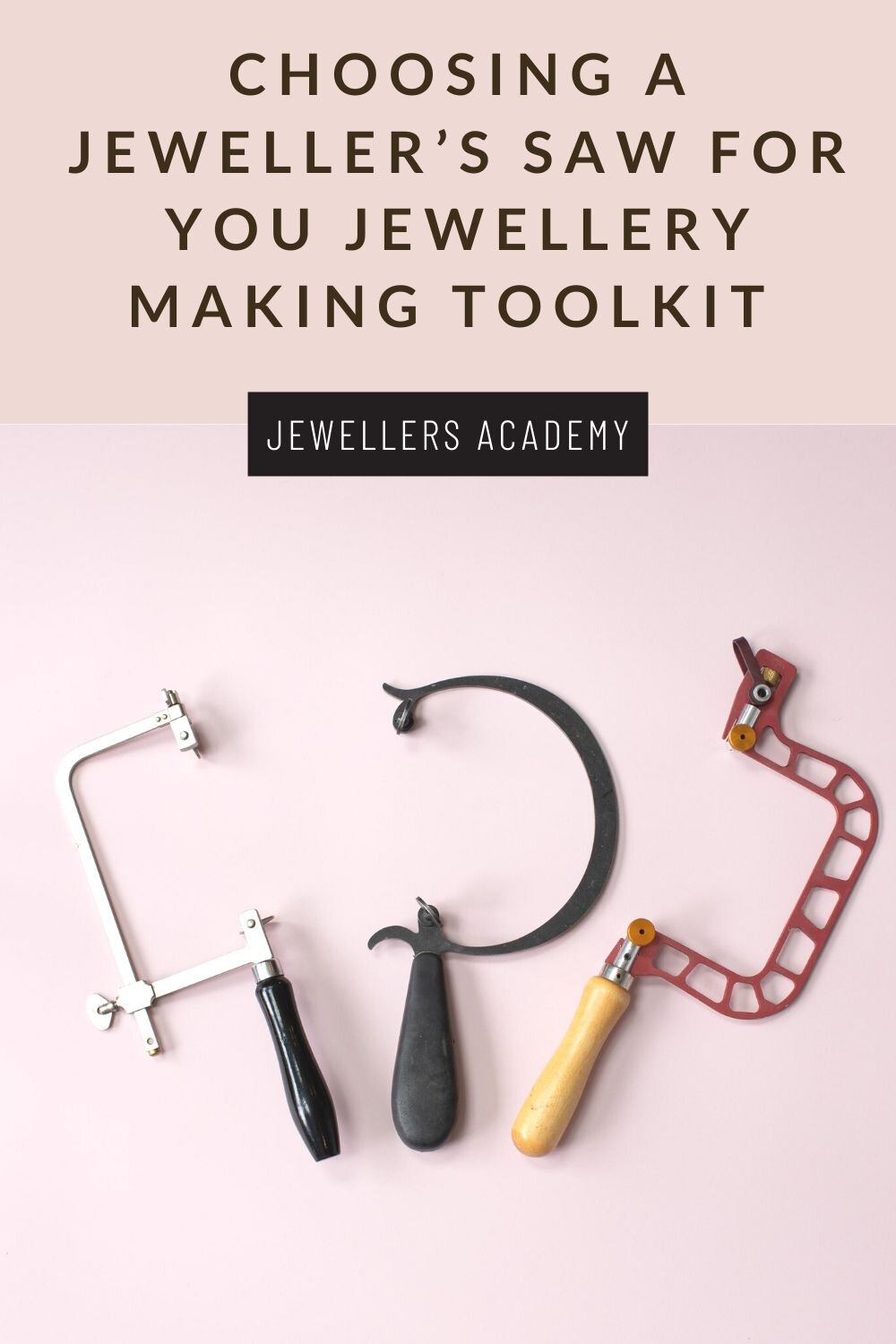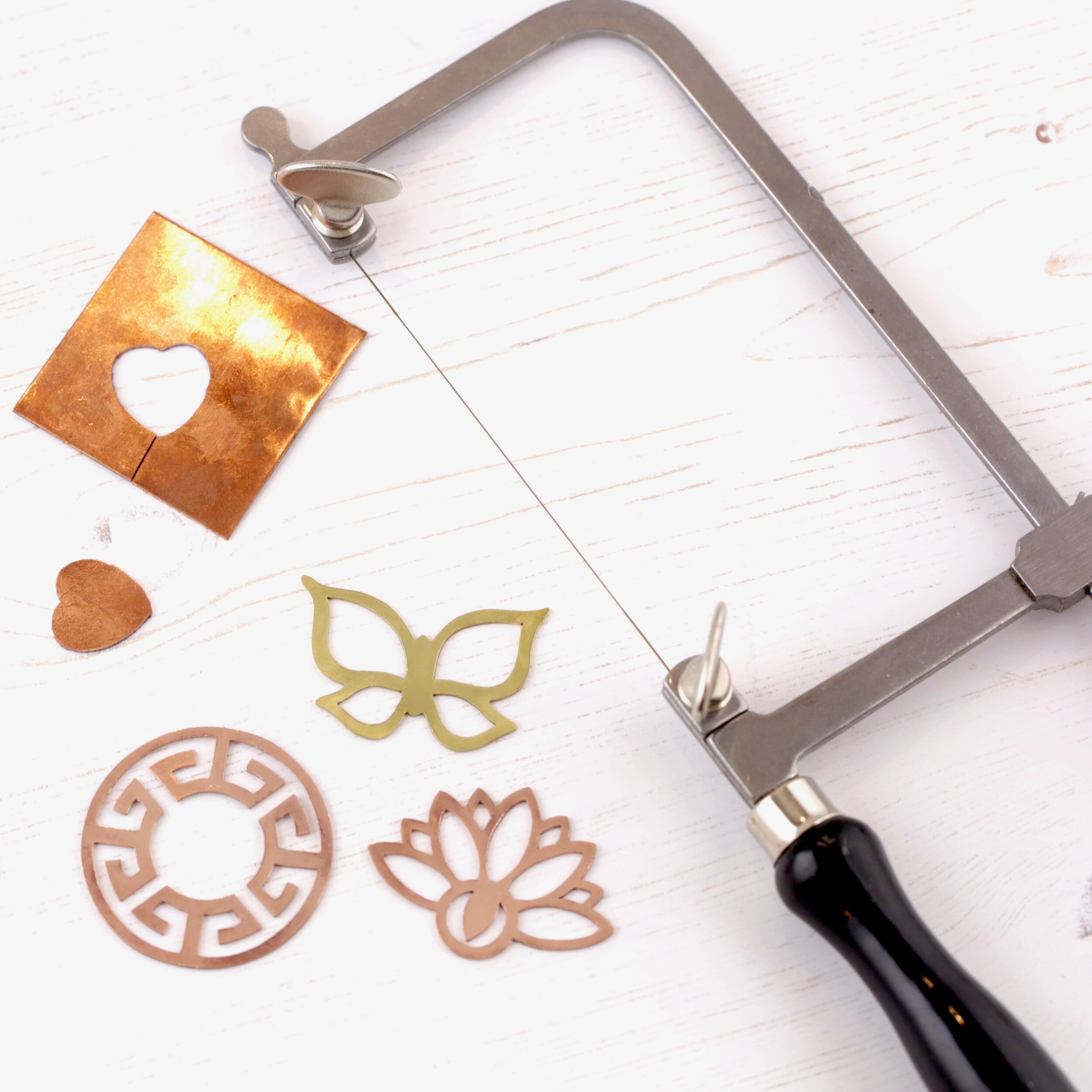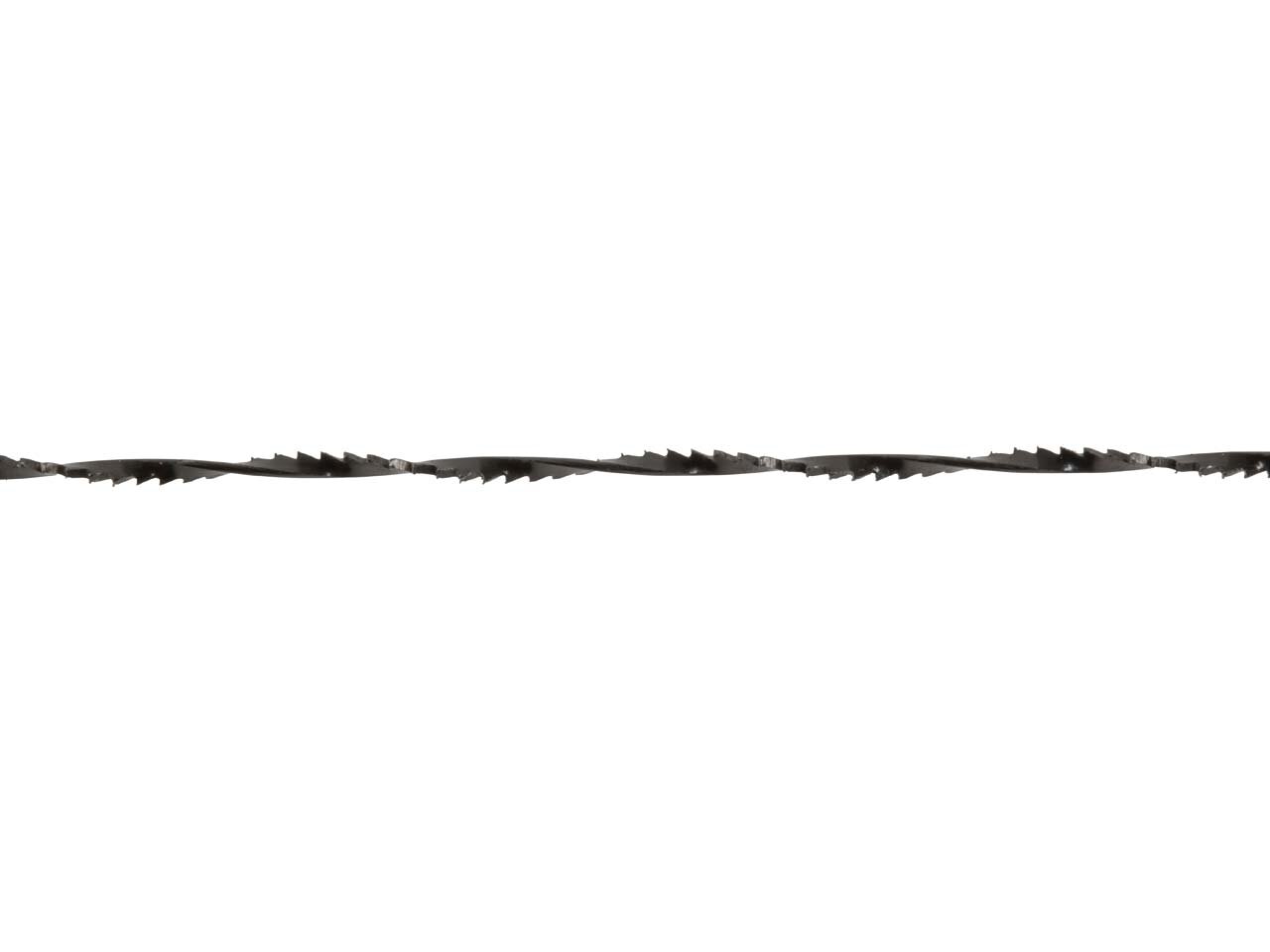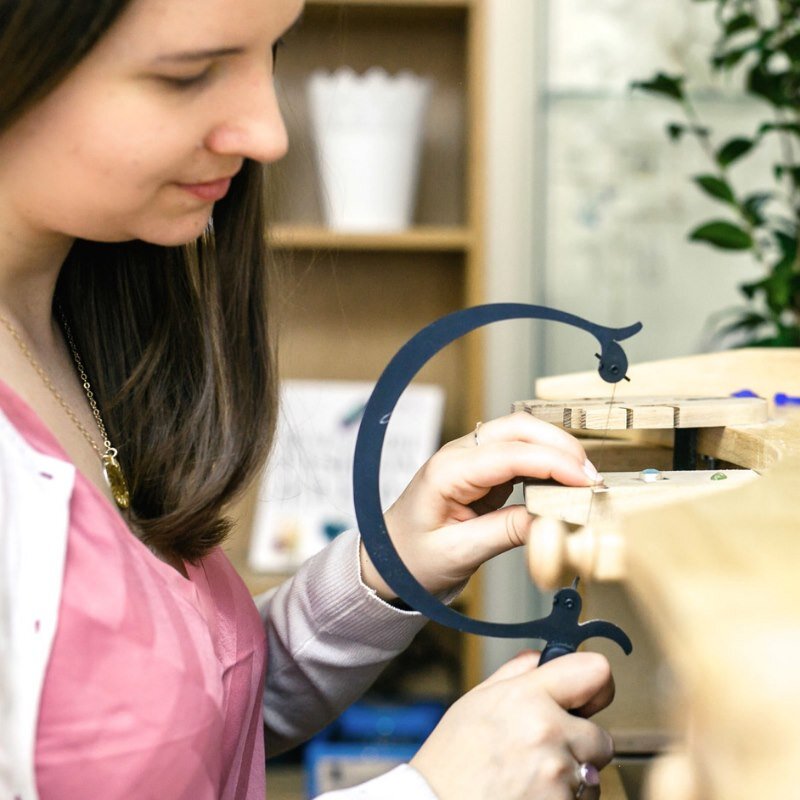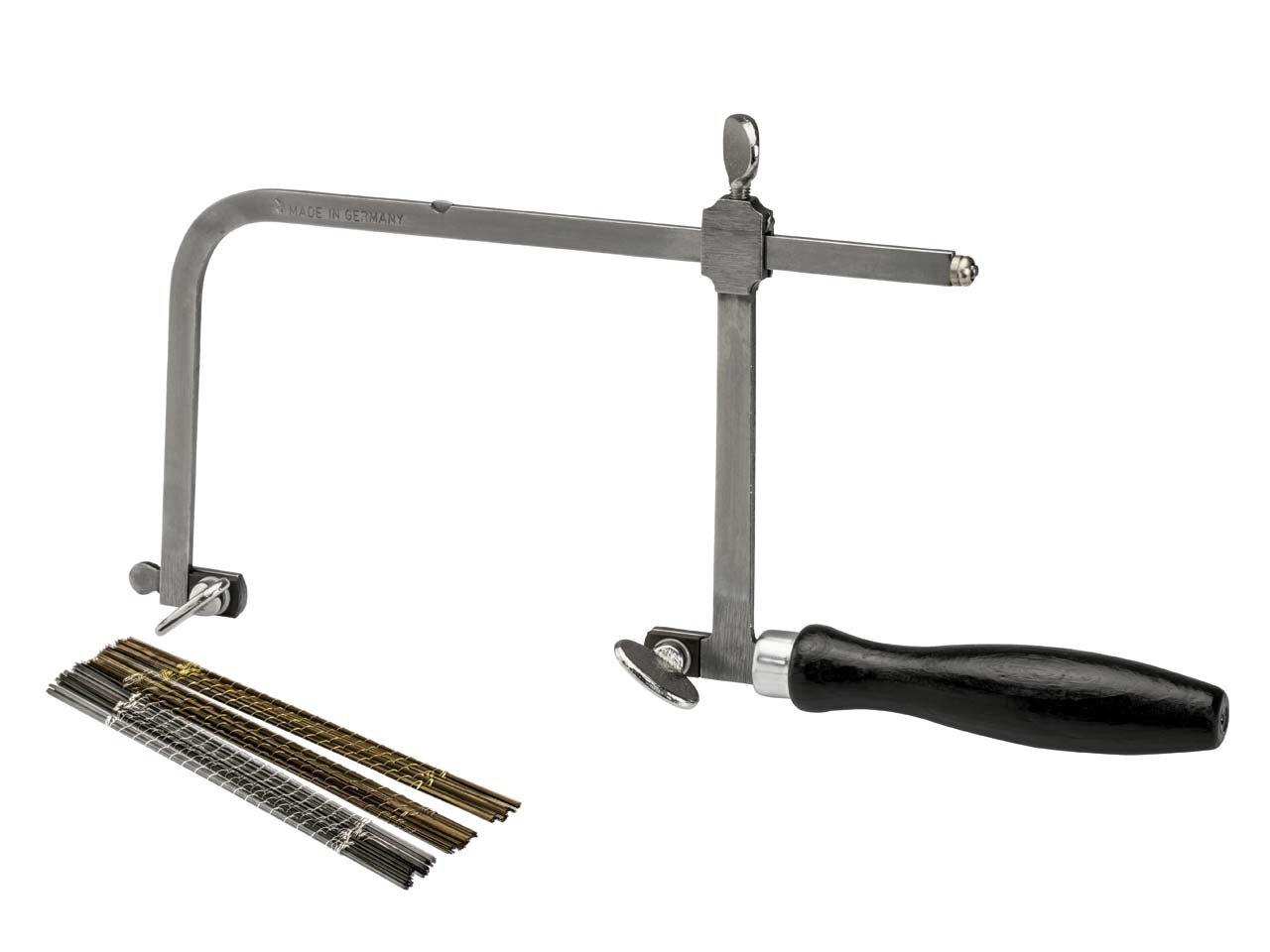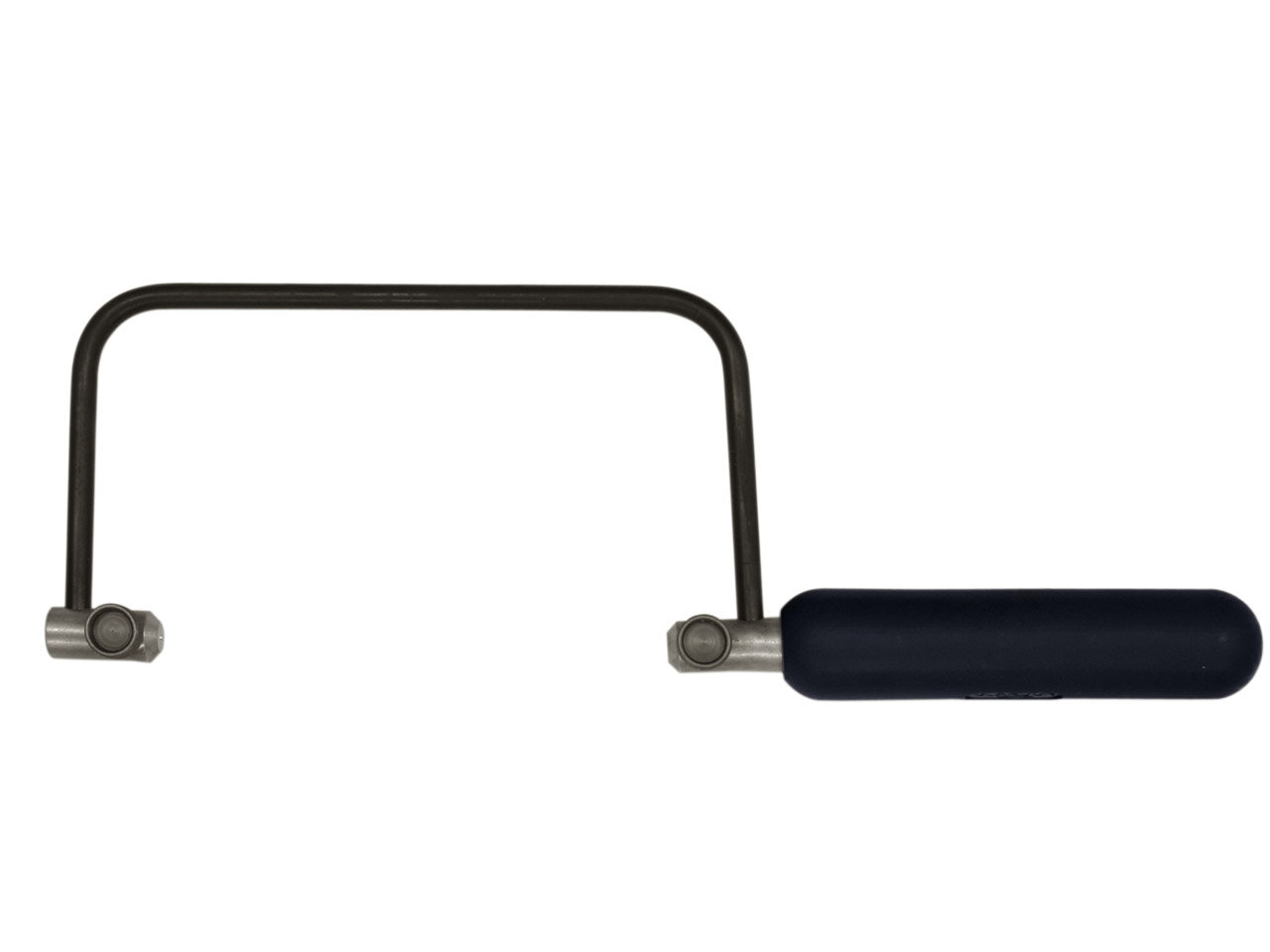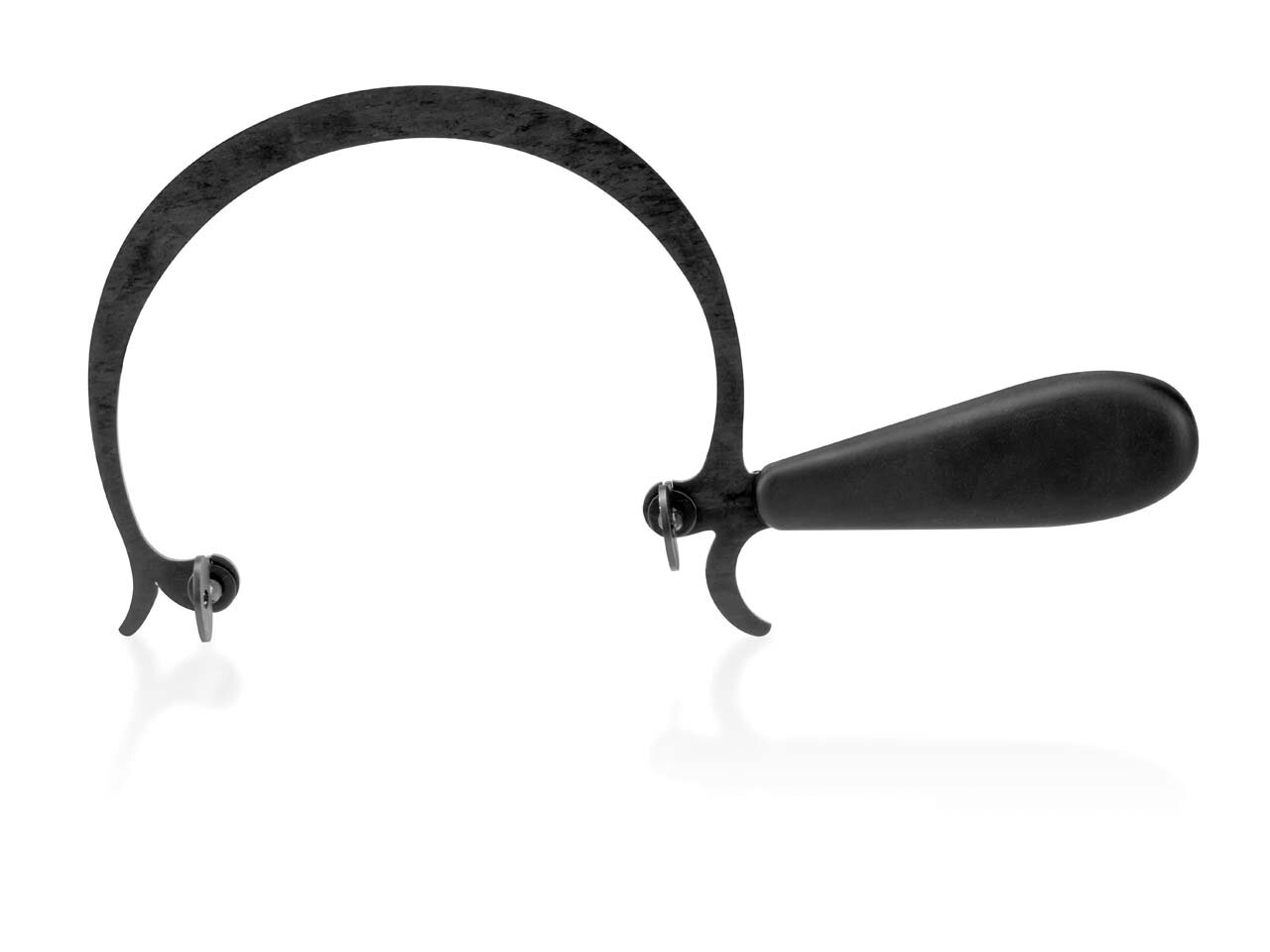Choosing a jeweller’s saw for you jewellery making toolkit
Blog
Most jewellers have this thing about tools! We love them and can’t get enough of them! But today we are going to talk about one of the main tools for a jeweller - the saw
The jeweller’s saw is used in a number in many forms of jewellery making, from silversmithing, wax carving, and even perspex so it is worthwhile investing in one for your toolbox. And because it is a tool that you will likely have for many years, it is worth taking a little bit of time before buying (or upgrading) to make the right choice for you and your needs.
So what is a jewellers saw?
Before we get into different brands of saws, it is important to understand what a jeweller’s saw is and what it does. A jeweller’s saw (also known as a piercing saw) comprises a metal frame and handle that holds a fine saw blade using tension. As the fine blades break frequently, many frames are adjustable for blade length to allow the re-use of broken pieces. The frame ‘throat’ that holds the blades can range size wise from 50 to 200 mm.
How to use your saw with saw blades
Every jeweller’s saw uses fine saw blades to cut the metal or material. For silversmithing and perspex, these saw blades come in a range of thicknesses, and you will typically choose your saw blade depending on the material being sawed and the nature of the work being done. Very fine and delicate work or fretwork, and cutting very thin metal requires a finer blade. Whereas, general purpose cutting and thicker metal requires a heavier blade. Saw blades have a range of sizes, from fine - coarse: 8/0, 7/0, 6/0, 5/0, 4/0, 3/0, 2/0, 1/0, 00, 0, 1, 2, 3, 4, 5, 6.
If you are using your saw to pierce out shapes for wax carving you will use specialist wax carving blades that are a spiral shape to easily cut through the soft wax.
Which saw blade(s) should i use?
When sawing in a straight line you will typically need a thicker blade; for sawing a curve or fretwork you would choose a finer blade. So you will regularly change your saw blade depending on your needs.
You will choose the saw blade based on the number of ‘teeth’ it has per cm. Finer saw blades have more teeth per cm than coarser saw blades so the resulting finish is finer. For example, an 8/0 has 33 teeth per cm so is very fine. A 1/0 has 20 teeth per cm so is a coarser choice. Traditionally you look for approximately 2 teeth for the thickness of the metal you are using.
You also need to consider the type of metal you are using when choosing a saw blade as some metals are harder than others. So for silver whilst you might typically choose a 2/0 blade, for gold and platinum you would tend to start with a 3/0 blade.
There are a number of brands of saw blades available so it’s worth trying a few different brands when first starting out to see which ones you get on with best. The most famous brand of saw blades is Vallorbe which is a Swiss brand known for high quality. But other brands such as Bergeon, Super Pike, Shark, Supra or even the own brand ones by Cookson Gold are also good.
Most saw blades are sold in bundles of at least 12 so you may want to buy several bundles so you always have plenty to hand if they break (which they do frequently) whilst you are working.
How to use your saw
You typically use your saw with the piece supported by a wooden bench pin that is clamped to your jeweller’s bench. Usually the bench pin will have two V-shape cutouts to enable different shapes to be pierced out and either the piece or the saw to be rotated during piercing.
You would normally start cutting metal, wax or perspex from either the edge of the metal or from a pre-drilled hole.
You want to use your saw primarily in a completely vertical position and saw in a gentle up and down motion. The saw only cuts on the downward motion.
Which saw to choose!?
One of the biggest choices you will have is which saw to buy as there is a lot of choice! The main saws available to UK jewellers are:
1. Basic Adjustable Jewellers Saw
Most jewellers will start with a basic adjustable 3” jewellers saw made from stainless steel. This saw costs approximately £10-15 and is adjusted using little screws to adjust to use longer or shorter saw blades and to create tension in the blade. Over time the screws can loosen so you may need to use parallel pliers to securely tighten the screws.
You often find this saw in beginners tool kits. If you plan on doing a lot of larger fretwork pieces you may want to consider a 5” version that has a much deeper ‘throat’ that will enable you to cut larger pieces of metal without having to stop to remove the saw and saw from another angle.
You can also find quick release basic saw frames but these don’t tend to be adjustable so that you can reuse broken saw blades but might be easier to use if you struggle with strength in your hands.
2. Eclipse Saw Frame
The Eclipse Saw Frame is a firm favourite amongst jewellers and costs approximately £20-25. This is a stainless steel fixed saw frame with wooden handle, so is not adjustable and the firm that fabricates them has been around since the 1760s! These frames are typically very high quality and should last a lifetime
3. Swiss Grobet Saw Frame Fixed
This is another frame that is traditionally a favourite amongst jewellers as it is made from lightweight metal and costs approximately £20. Unlike the basic or Eclipse models, it features a rubber handle and uses screw locks to secure and tighten the blades.
4. Knew Concepts
The first of our more modern saw frames is called the Knew Concepts Saw which was developed in 2008. The frames are fabricated from lighter metals such as aluminium or titanium, have a lattice style frame which further increases the lightness of the saw, and uses magnetic technology. So the Knew Concept saws are lighter to use; a good option if you are planning on doing a lot of sawing or fretwork.
However, this technology does come at a premium and a Knew Concepts saw will cost between £50-£90.
The original model uses a screw tension mechanism, but the most popular version of this saw uses a quick release mechanism and some models even have a swivel mechanism for the blade.
This saw can take a little bit of getting used to if you have previously used a more traditional method, and some people do experience challenges in learning how to tension the blade. Saw dust or bits of broken saw blades can get caught in the tensioning mechanism which can cause problems with saw blades slipping, so it is important to keep the tensioning mechanism clean.
This saw frame can’t replace experience or skill in piercing and sawing, but they often make blade placement and tension easier and are nice and light to use.
5. Green Lion Saw
A more recent addition to the jeweller’s saw line up is the very beautiful Green Lion Saw. It is a stylish and almost sculptural saw frame made with a flexible steel frame and rubber handle. It is definitely heavier than the Knew Concepts Saw, but it is beautiful to use and is well balanced for sawing. It is a fixed frame so it cannot be adjusted to cope with different saw blade sizes so it won’t be the first choice for sawing large pieces of metal, but for smaller pieces it is a joy to use.
It is however one of the pricier saws on the market at circa £75 so it is perhaps one for the Christmas list!
What to consider when buying a saw frame?
Things you will want to consider when choosing your saw are:
1.Depth of the Frame
You will need to consider the typical size of the pieces you are making. The depth of a saw frame determines how far into a sheet of metal you can cut out shapes without the back of the saw hitting the metal when you turn it around. If you are going to be sawing large pieces of metal look for a saw frame with a 5” deep saw frame (adjustable or Knew Concepts) as this will minimise the time you have to stop and start sawing.
2. Handle size
Traditionally saw handles were made of wood but newer models come with rubber handles. If you are going to do a lot of sawing you may want to look at a rubber handle saw as it will be a little bit more comfortable to use. However if you only saw intermittently then you can get away with a wooden handle.
3. What the saw handle is made of
You will also want to consider what the saw is made of. Steel frames tend to be heavier compared to lighter weight metals like aluminium frames so if you plan on doing a lot of sawing you might want to choose a lighter frame for comfort.
4. How you fasten the blade
The final thing to think about is how you fasten and tension the blade. You may want to test a couple out to see what you find easiest to use and if you struggle with strength or agility you may want to look at a quick release saw frame or something like the Knew Concepts that doesn’t require strength or pressure to provide tension.
But regardless of which saw you choose, do remember that it is just a tool. No matter how sophisticated that tool is, if you don’t have a solid sawing technique then you will struggle to get the most out of it. So we recommend starting with a basic saw to learn and practice with and upgrade further down the line once you get a feel for the kind of saw that will serve you best.
We'd love to know which saw you are using, whether you're happy with it or if you’re dreaming of something better? Share with us in the comments below!
If you want to learn more about how to saw metal using a jewellers saw then our Beginners Silver Jewellery online course called The Silver Jewellery Workshop with Michelle Leaver is the perfect place to start and will teach you proper sawing technique that will help you get the most out of whichever saw you use.

